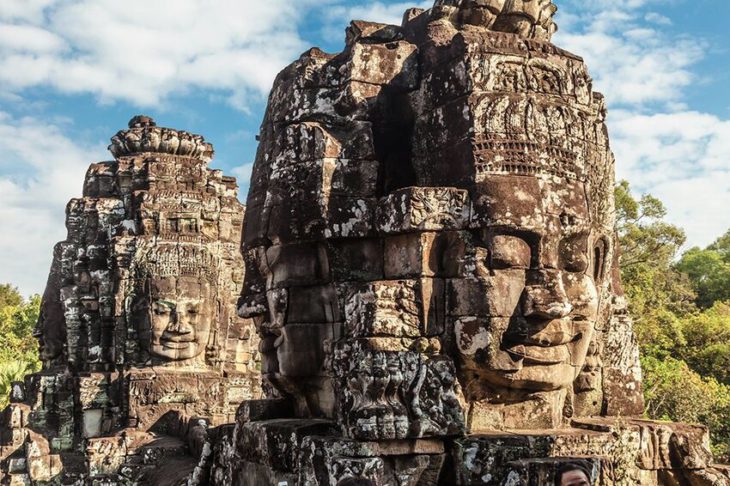
The ancients were undoubtedly accomplished sculptors and left to us a rich legacy of astounding art that continues to inspire more works today. Perhaps our very own modern Mt. Rushmore may have drawn its inspiration from another iconic mount of the gods in present-day Turkey – the Nemrut Dag. These beautifully carved stone heads around the world are geographic and historical landmarks any traveler must see on their itinerary. Whereas some of the ten heads featured here are ancient artifacts, the others represent modern personalities you may be familiar with already, such as Young Mao Zedong in Changsha. The others like the Olmec stone heads in Mexico represent an extant history that lends a flavor of mystery to them and arouses curiosity in you. However, these pieces of art are pleasing to the eye of any traveler and we give you a little peek into their history.
Decebalus Rex, Romania
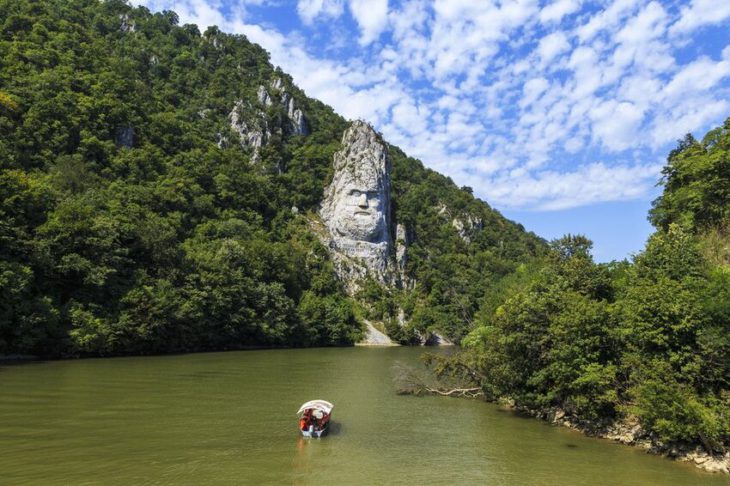
A wonderfully carved massive piece of art regally guarding the Danube the same way the historical king did in his time. At 131 feet, the stone face is arguably the largest carving of its type in Europe and blends well into the picturesque mountainside along the Danube. Decebalus ruled as the last king of ancient Dacia in what is today Romania from 87-105 AD successfully repulsing Roman occupation. Although completed only recently in 2004, the sculptors rendered it so well, it gives the impression it was carved in the king’s time. The stone head makes for good sightseeing while sailing down the mighty Danube and presents a splendid backdrop for holiday pictures. However, it also represents a rich local history and a sense of pride for Romanians, who consider the ancient king a national hero. Decebalus Rex is a monument with artistic stature that is worthy the recognition.
Bayon Temple, Cambodia
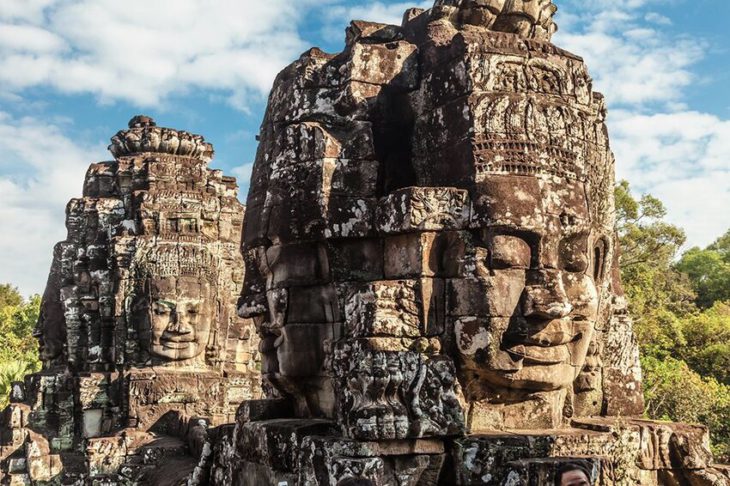
Bayon Temple is an artistic marvel of serenely smiling faces carved in stone that simply imbue the beholder with a sense of peace and calm. These masterpieces, commissioned by King Jayavarman VII as part of the Mahayana Hindu state temple, date back to the 12th century. The temple was the centerpiece of the walled city, Angkor Thom that was in turn next to the historical Angkor Wat temple complex in what is today northwest Cambodia. Bayon temple was Buddhist at inception although later kings realigned it Hindu worship. However, the temple contained many minor shrines dedicated to multiple gods whose faces appear carved into the many towers. Although the subjected to climatic vagaries over the centuries, these iconic stone heads still retain their artistic splendor. They add to the rich cultural heritage of Cambodia and make a compelling tourist attraction for travelers in the east.
Leshan Giant Buddha, China
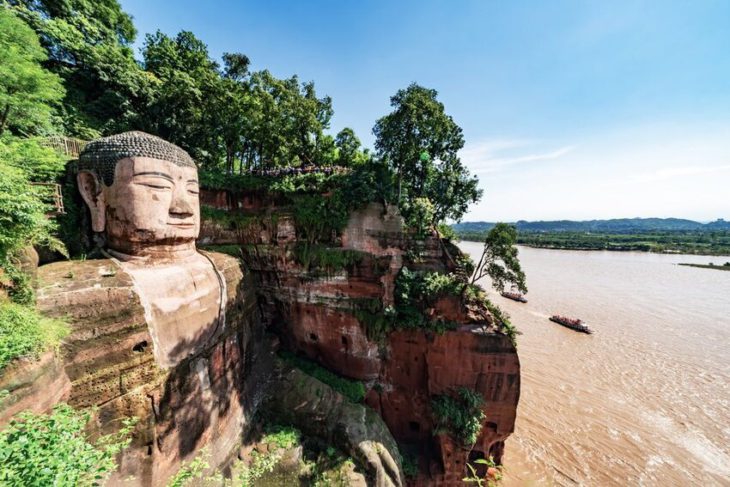
The city of Leshan in the Chinese province of Sichuan is the home of the world’s largest stone carving of Buddha. Carved from Chinese red sandstone, the Buddha is over 200 feet tall in a seated posture along a riverbank. A legacy of Hai Tong, a Buddhist monk, it took 90 years to complete in 803 AD by his disciples long after his death. In addition to its gigantic size, the Leshan Buddha also boasts a unique feature of engineering that has preserved it from erosion. A clever drainage system built into the head channels water between the ears and through the eyes giving the impression of tears. The monk intended the statue to calm the three rivers Min, Dadu, and Qingyi whose turbulent waters were a threat to the local people. The Buddha is a classified UNESCO World Heritage site and major tourist attraction.
Crazy Horse Memorial, United States
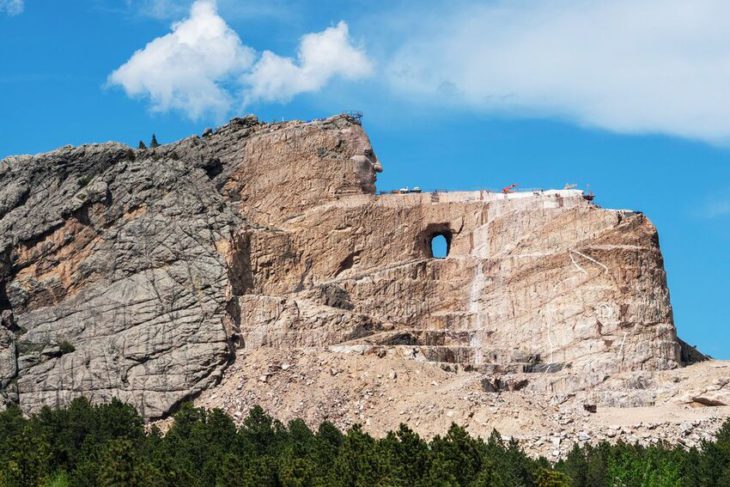
Crazy Horse Memorial is a work in progress began 72 years ago that seeks to immortalize a famous resistance warrior chief of the Oglala Lakota clan. The carving on Thunderhead Mountain in Custer County, South Dakota is not far from the Mount Rushmore that hosts presidential stone heads. Crazy Horse, considered among American greats in history, led his people, the Lakota, in resisting the occupation of their lands in the mid-1800s in a campaign that lasted a decade. Work on the monument began in 1948 funded through private donations and as family undertaking initiated by Henry Standing Bear. The lead sculptor, Korczak Ziolkowski that agreed to take on the project died in 1982 long before any substantial progress on the statue. His widow took on the project and to date Crazy Horse’s head and face are complete as the Ziolkowski children work on the rest of the statue.
Easter Island Moai Heads, Chile
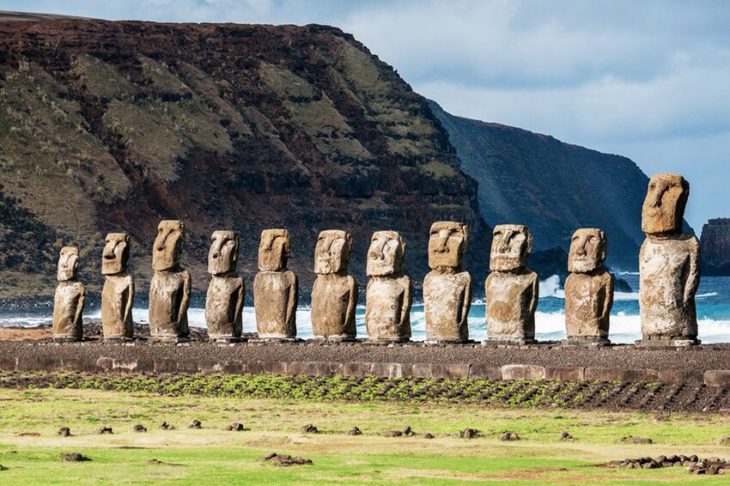
Easter Islands in Chile are famous for the many rock sculptures strewn all over landscape. To what memorial these stone figures were dedicated remains unclear. There are varied speculations that suggest a religious or ancestral significance without any definitive backing and so far, they remain mystery. Aside from different heights, all stone carvings appear to have similar facial features and stand facing inland. The Moai heads carved out of the local volcanic rock date back approximately 1250-1500 CE. The name Easter Island heads belie the fact that the carvings are actually full body albeit with disproportionately large heads. Although the purpose for this great artistic feat may not be clear to us today, the Easter heads are still a marvel of art and worthy of preservation. There spread around the Island in places far from the quarry at Rano Raraku despite their monumental weights is another mystery.
Young Mao Zedong Statue, China
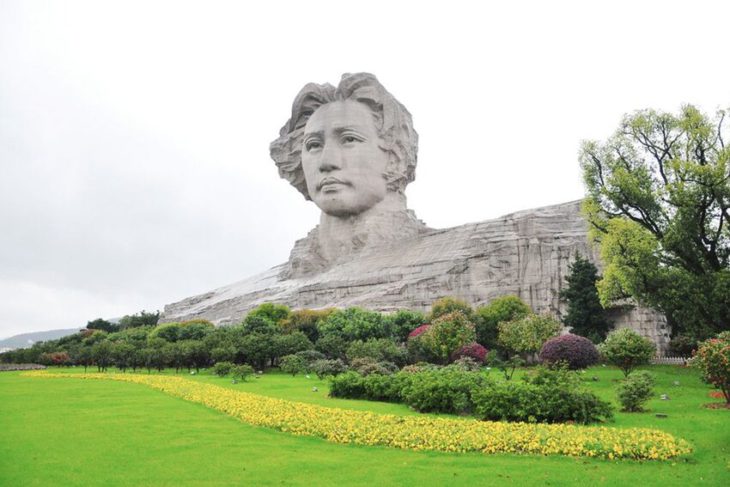
Mao Zedong, the famous Chinese revolutionist leader enjoyed a cultic following while alive and still does today. Chairman Mao, as he was fondly called in China bestrode the political landscape of his country from 1943-1976 like a colosus. He was born in Shaoshan, Hunan province whose capital city Changsha demonstrated a zealous loyalty by commisioning a stone carving in his honor. The locals in Changsha spent a fortune to built a bust of their beloved leader on an island facing the city. The bust is a 100-foot high granite sculpture that depicts a younger image of the man in his early 30s around 1925. The stone head is not easily identifiable with the older Mao the world was familiar with but the locals wanted it that way. The young Mao Zedong statue is a fine piece of art that enriches the Chinese cultural heritage.
Certovy Hlavy, Czechia
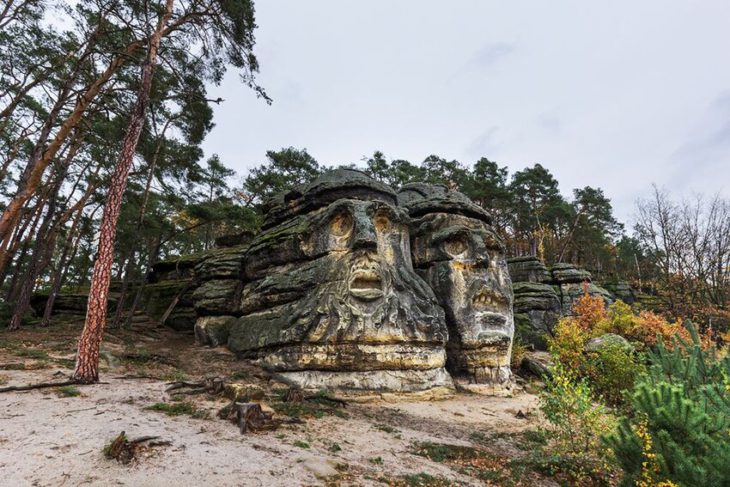
The devil’s heads in Zelizy, Czechia are indeed a scary sight should you stumble upon them unexpectedly. The location in the forest is frightening by itself for a first time visitor before encountering these fiendish-like stone heads. The sunken hollow eyes, the horrified expression, and the black color from the effects of weather can get the fainthearted fainting. Visitors call it the “creepiest place in the Czech Republic” and the stone heads truly earn the epithet. This macabre pair is the creative genius of Vaclav Levy and come second in size to the presidential heads at Mount Rushmore, USA. They are on private property, and although the owner had the forest cut down to enhance visibility and reduce weather damage, the over 170 years have taken their toll. Despite the creepiness and the wear, these devils still hold priceless artistic value to lovers of classic sculpture.
The Olmec Colossals of San Lorenzo, Mexico
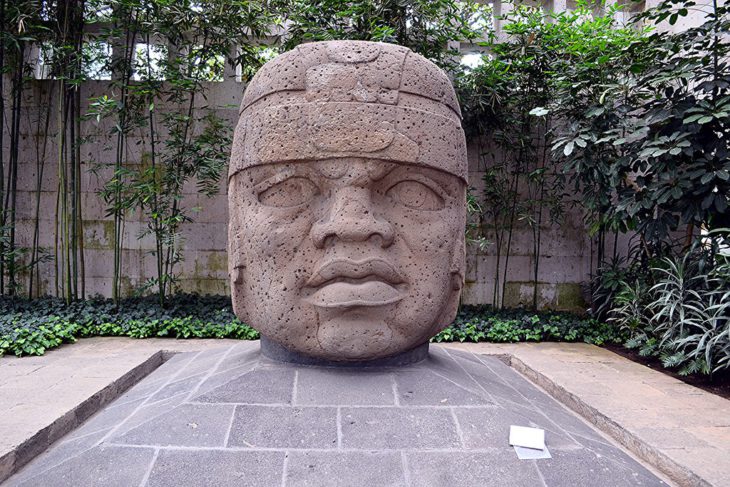
Nowhere else in the Americas has such abundance of Mesoamerican civilization artifacts that go back millennia than San Lorenzo, Mexico. The genesis of civilization in this region starts with the mysterious Olmecs, whose origins and departure continues to baffle historians and archeologists. However, their civilization DNA impacted heavily on later cultures down to the Aztecs. This ancient civilization vanished suddenly and no one knows whence they went. However, they left behind their imprint in the colossal basalt heads they carved as a testimony of their one time presence. These impressive and finely carved stone heads measure over 3 metres high, weigh nearly 20 tons, and date back to 900 BCE. The ancient masterpieces are as intriguing as they are fascinating and they make a good tourist attraction in the regions of Veracruz and Tabasco along the Gulf coast of Mexico.
The Stone Heads of the Gods, Mount Nemrut, Turkey
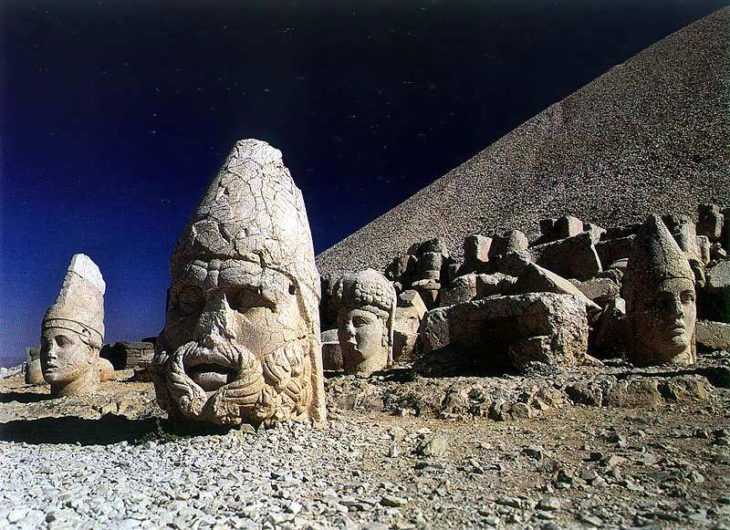
When on the tourist circuit in Turkey, spare time to a hike up Mount Nemrut, the amazing throne of the gods. Nemrut Dag is home to exquisite stone head carving that has a double cultural heritage rooted in Greek and Persian origins. The double heritage shows in the Greek facial features of the stone carvings and the Persian rendering of the clothing and headdress. The Hierotheseion, designed as both temple and tomb was the ambitious project of King Antiochus I built to immortalize his name among the gods. The tumulus (mausoleum) of Antiochus had stone carvings of different deities guarding it from four directions on beautifully appointed terraces. The “beheaded” legends may have lost their majestic glory due to vandalism over the ages, but their colossal stone heads are still on the mound. UNESCO declared the Dag a world heritage site and launched restoration programs for conservation.
Albert Einstein Stone Head, Panama City
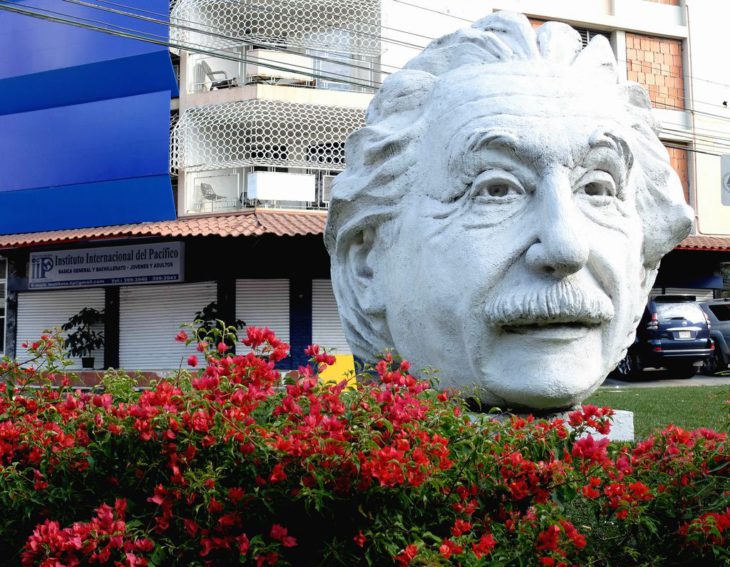
Although not strictly a stone carving, the Albert Einstein head in Panama City can stake a claim to a place among the greats. Commissioned in the 1960s by a local Jewish community in the area, the head is an imposing landmark that demands attention. Molded Carlos Arboleda from a mix of marble dust and cement, the massive head measures 3 metres by 3 metres. The Einstein head’ sits in front of the New York Bagel Café on Via Argentina, a favorite spot for expatriates and tourists in Panama City. In this strategic location in the center of the city, it is hard to miss and adds to the beauty of the town. The Panama citizens are so proud of the colossal head they opened a Facebook page for it! The Einstein is a colossal of our times and worthy of recognition.
